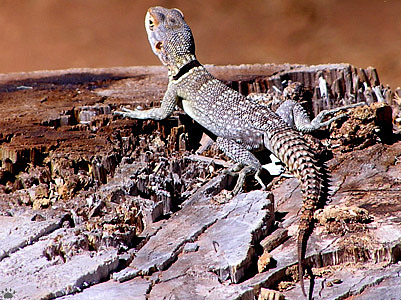
Iguana Oplurus cuvieri, Park National d'Ankarafantsika.
Madagascar - Part 8
When tourists visit Madagascar, most of them are unaware that local wildlife is not limited to lemurs. Guides in National parks do their best to show them as much other animals as they can. Still, many people go home having seen only some birds, a few chameleons, and probably a flat-tailed gecko or two. Other creatures are either too hard to find, difficult to identify, or so common that guides get used to them and don't consider them interesting. If you explore the forest with a guide, make sure he knows that you'd like to see everything, not just the "regular attractions". Look under logs and into hollow trees, explore caves and piles of dry leaves. Four hundred species of the island's reptiles are waiting for you.
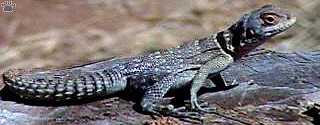
Iguana O. cuvieri, Park National d'Ankarafantsika. |
 |
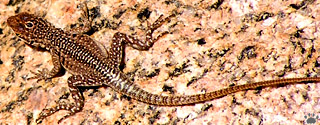
Iguana Chalarodon madagascarensis, Anja Nature Reserve. |
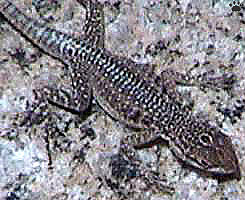
Iguana Ch. madagascarensis, Anja Nature Reserve. |
Iguanas of Madagascar are a biogeographical mystery: they belong to a mostly American group which also includes two species on Fiji. Chalarodon iguana has a well-developed third eye (left). Iguanas are common in rocky areas and forests, but are missing from some areas for no apparent reason. |
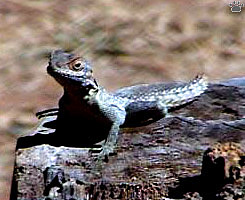
Iguana O. cuvieri, Park National d'Ankarafantsika. |
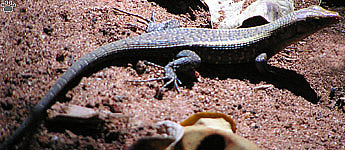
Girdled lizard Zonosaurus petersi, Kirindi Nature Reserve. |

Skink Amphiglossus crenni, Parc National Andasibe-Mantadia. |
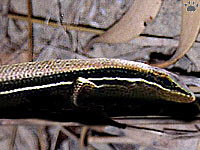
Skink Mabuya nancycoutae, PN L'Isalo. |
When you hear rustling of dry leaves on a sunny Madagascar afternoon, it's usually a skink lizard. Most are small, glossy golden-brown with black lines on sides. A hundred or so local species represent all stages of evolution from a "normal" lizard to a legless one. Larger girdled lizards (Zonosaurus) are in a separate, but closely related family. |

Z. ornatus, Anja Nature Reserve. |
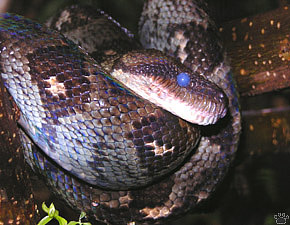
Boa Sanzinia madagascariensis, Parc National Masoala. |
 |
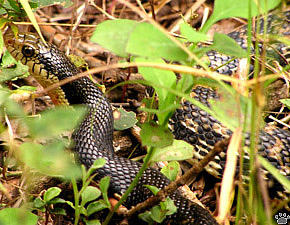
Pseudoxyrhopus ambreensis, PN Montagne d'Ambre. |
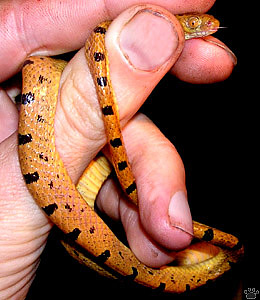
Geodipsas sp. (possibly undescribed), Parc National Marojejy. |
Except for two marine species, there are no venomous snakes on Madagascar, but for some reason many local people, even some biologists, are afraid of them anyway. The largest ones are three species of boas. Just like iguanas, freshwater shrimp and some insects, they have close relatives in South America. Most other snakes belong to Colubrid family; there are also a few tiny blind snakes. |
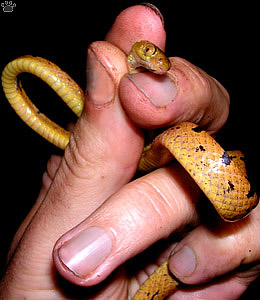
Geodipsas sp. (possibly undescribed), Parc National Marojejy. |
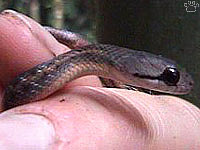
Liopholidophis infrasignatus,
Parc National Andasibe-Mantadia. |
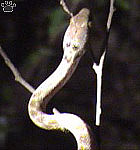
Stenophis sp.,
Parc National Marojejy. |
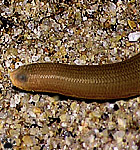
Blind snake Typhlops
ocularis, Vohemar. |
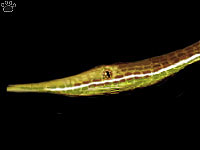
Lance-nosed snake
(Langaha sp.), Parc National Masoala. |
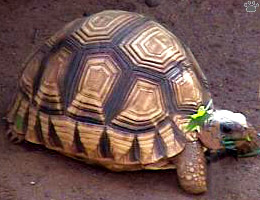
Plowshare tortoise (Geochelone yniphora), Durrell Wildlife
Conservation Trust Breeding Center, PN d'Ankarafantsiaka. |
Tortoises of Madagascar include the world's most beautiful species. All of them used to be common in dry forests of the western coast. Now two are extinct and the other five critically endangered due to habitat loss, illegal hunting, and mass collecting for illegal pet trade. |
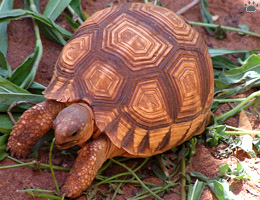
Plowshare tortoise, Durrell Wildlife Conservation Trust
Breeding Center, Parc National d'Ankarafantsiaka. |
 |
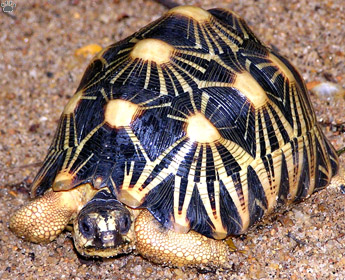 |
| Radiated tortoises (G. radiata), Toliara. |
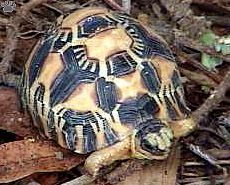
Baby radiated tortoise, Toliara. |
All reptiles of Madagascar suffer from illegal trade, but tortoises are the most popular victims. Each year, hundreds are confiscated, and thousands more get smuggled to Europe, North America and Japan, where most of them slowly die in cold apartments or tiny terrariums. At present rate, they will become extinct in the wild within one-two decades. |
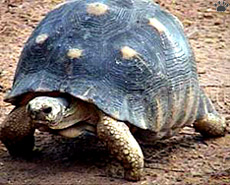
Old radiated tortoise, Toliara. |
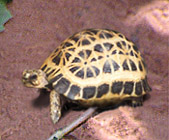
Spider tortoise (Pyxis arachnoides),
Reniala Nature Reserve. |
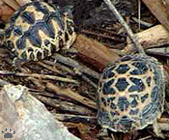
Baby reticulated and spider tortoises,
Reniala Nature Reserve. |
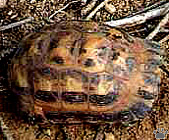
Flat-tailed tortoise
(P. planicauda), Kirindi NR. |
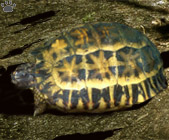
Flat-tailed tortoise,
Kirindi Nature Reserve. |

Hinge-back tortoise (Kinixys belliana), PN d'Ankarafantsika. |
Some Madagascar tortoises wander around during the dry season, but most spend it hibernating under leaf litter (left) or underground. Finding them in the forest can be almost impossible from June to August. |
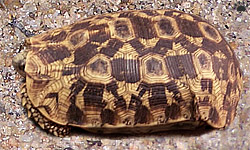
Hinge-back tortoise, Parc National d'Ankarafantsika. |
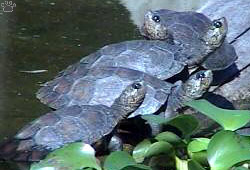
Young Madagascar turtles (Erymnochelys
madagascariensis), PN d'Ankarafantsika. |
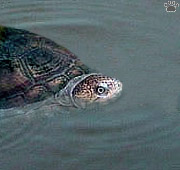
East African Side-neck Turtle (Pelusios
subniger), Moromandia. |
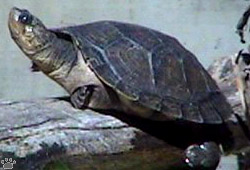
Young Madagascar turtle, Parc National
d'Ankarafantsika. |
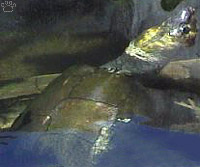
Old Madagascar turtle, PN d'Ankarafantsika. |
Only one freshwater turtle is endemic to Madagascar. It is now rare, and large old specimens like the one shown here are extremely difficult to see. Some grow up to 1 m (3') in length. There are also a few marine turtles, and three species shared with Africa. Breeding centers for tortoises and turtles now exist on the island, but so far they can't cope with population declines. |
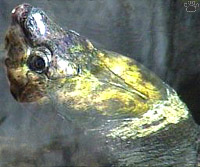
Old Madagascar turtle, PN d'Ankarafantsika. |
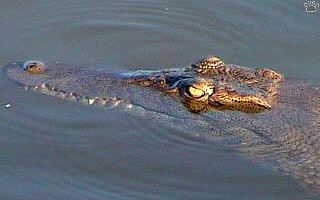
Nile crocodiles (Crocodylus niloticus) of Madagascar are usually smaller than
African ones, but they still kill people almost every year. PN d'Ankarafantsika. |
Part 9: Frogs
Back to Part 7
Home
|